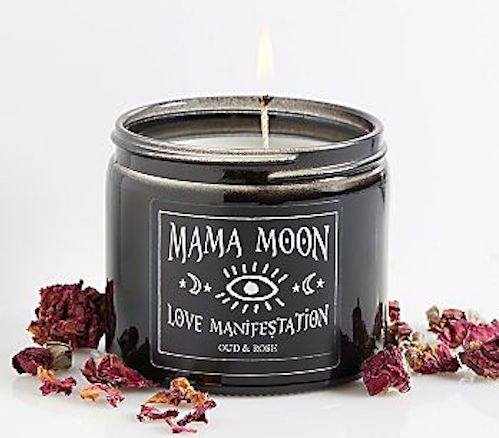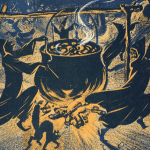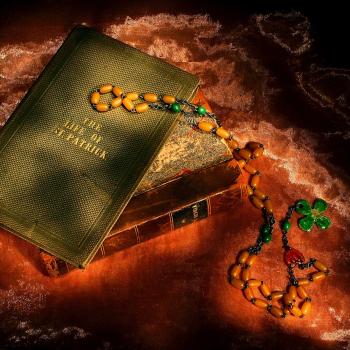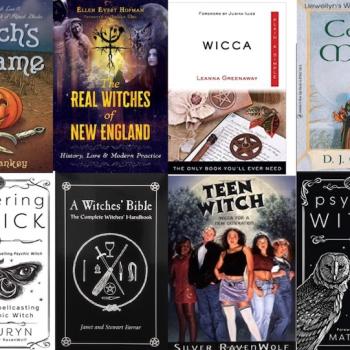My wife Ari and I spent the last couple of days with the amazing Thorn Mooney (author of Traditional Wicca: A Seeker’s Guide), and not surprisingly many of our conversations revolved around Witchcraft. A lot of those conversations kept coming back to the Bestsellers in Wicca, Witchcraft, and Paganism chart on Amazon. It’s a chart I find fascinating because it’s both familiar and completely unknown to me at the same time. (Thorn is also much more productive than I am, while I was sleeping she wrote her own, better, article on this trend. Not surprisingly we were discussing the “bestsellers” list because Thorn had just officially released her amazing hew book Traditional Wicca.)

The list contains a lot of the usual suspects one would expect to find there: Scott Cunningham (multiple times), Starhawk, and Raymond Buckland of course. A little further down the list there are titles I’m familiar with but shouldn’t be in a Wicca, Witchcraft, and Paganism list: “Simon’s” Necronomicon and the exploitive piece of shit Christian book He Came to Set the Captives Free. But the list is mostly dominated by authors I’m not familiar with and writers who don’t share in the “Pagan Spaces” that you (most likely) and I inhabit. It’s like an entirely different world of Witchcraft that looks familiar but feels so very far away at the same time.
Despite the sniping that often happens online between Wiccan-Witches and Traditional Witches, both groups share similar spaces and a whole lot of friendships. My Facebook page is full of Traditional Witches, and I spend a lot of money buying their books and genuinely being excited about what they have to offer the greater Witching world. We may not all read the same blogs, but we are mostly aware of one another and visit many of the same festivals and events. Am I anxiously awaiting Besom, Stang and Sword by Christopher Orapello and Tara-Love Maguire? Hell yeah! Different Witchcrafts between us, shared spaces and greater community!
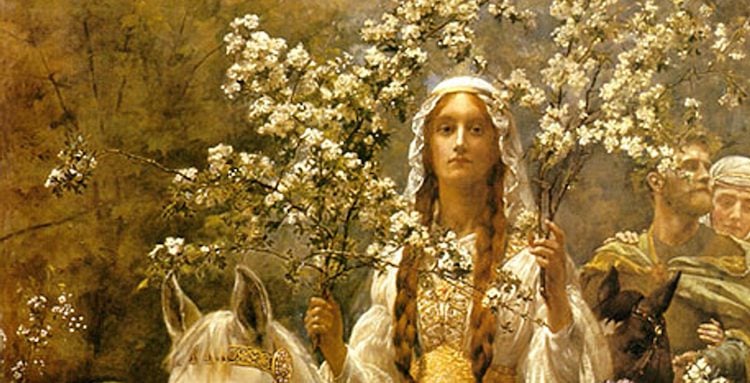
But then there are the many people at the top of the Amazon Witchcraft charts that I don’t know, and don’t share spaces with. Their books aren’t published by Llewellyn or Samuel Weiser or Three Hands Press or Inner Traditions. I’m not friends with them on Facebook, don’t see them at festivals, or on platforms like the Wild Hunt, Patheos Pagan, or Pagan Bloggers. I like to think I’m reasonably well plugged into what’s going on in the greater Pagan and Witch worlds and these people are simply absent from mine.
When mentioning some of this online yesterday one of my friends helpfully suggested that many of these “Unknown Witches” were self-published writers. Certainly at least a few of them are. A great deal of pamphlet-writer* Lisa Chamberlain’s success most likely stems from the fact that her books are free with a Prime Membership or are just two or three dollars otherwise. I understand people wanting inexpensive answers and or advice. But a lot of them aren’t self-published, in fact their books are being published by major publishers, often in lovely hardcover editions.
Many of these titles are big-time books, and they are reaching retail spaces far removed from the local Witch or metaphysical store. You can buy Practical Magic: A Beginner’s Guide to Crystals, Horoscopes, Psychics & Spells By Nikki Van De Car at your local Urban Outfitters, and “Witch swag” is all over the place. All sorts of retail chains today are selling smudge sticks, crystals, and spell candles for generally inflated prices. A part of me wishes I was selling love manifestation candles for forty bucks.
Titles like The Green Witch: Your Complete Guide to the Natural Magic of Herbs, Flowers, Essential Oils, and More by Arin Murphy-Hiscock are published by Simon and Schuster for instance (currently number one at Amazon). Basic Witches by Jaya Sexena and Jess Zimmerman contains a Witchcraft that’s both familiar to me and also something completely different:
Want to feel terrifyingly beautiful? Wear the right color of eye shadow to project otherworldly glamour. Need to exorcise a toxic friendship? Repeat the proper incantation and make it disappear. Want to increase your energy? Whip up a tasty herbal “potion” to rev up your stamina. DIY projects, rituals, and spells—along with fun historical sidebars—summon the best trends of the modern witchy lifestyle and the time-trusted traditions of the hell-raising women of the past. With humor, heart, and a hip sensibility, Jaya Saxena and Jess Zimmerman dispense witchy wisdom for the curious, the cynical, and anyone who could use a magical boost.
I recognize the rituals described there, and what someone wants to do with their eye shadow is their business, but there’s no Goddess or Horned God, and even the word “magick” is only implied and never spelled out.
When writing about this on social media yesterday some of my friends were disapproving. I understand the impulse, but I long ago stopped caring about how people use the word “Witch.” You can’t control language, and Witch has always been a word with dozens of definitions and interpretations. Someone living the “Witchy Lifestyle” is just as valid a Witch as those who are doing rituals at the crossroads or reading a Gardnerian ritual out of their Book of Shadows. Most likely everything about these books empowers people and brings them closer to the magickal current that fuels so much of what many Witches do. I’m not sure how many young women are lighting sacred bonfires in designer dresses (thanks Vanity Fair!), but anything that encourages a better relationship with the natural world has to be a positive thing, right?
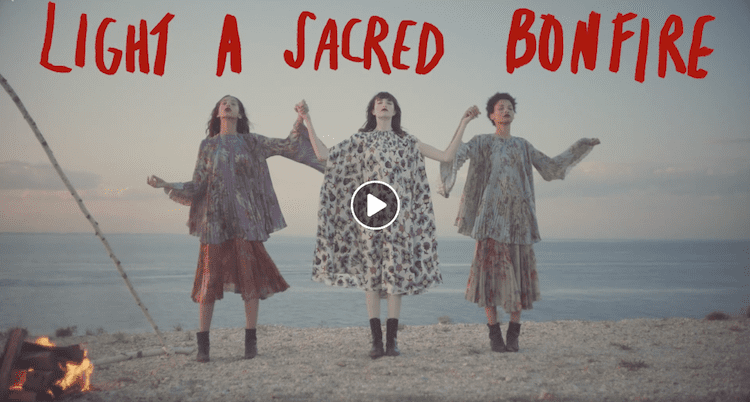
I know that the “retailing of Witchcraft” bothers some folks, but magick has long been a retail item. Botanicas, drug stores, and other commercial establishments selling magick have been a part of American culture for decades. Some of the earliest published books were magickal works, and many of them were best-sellers. Anything that brings magick to more people is a positive development, even if their embrace of magick ends up being a temporary thing. We are certainly in a “Witch Moment” right now, but Witchcraft is more than just a trend, it’s sewn into the very fabric of the Western World. It will always be here, and it will often be here in forms many of us are unfamiliar with.
The long term ramifications of this “other Witchcraft” are fascinating. Will it become the dominant definition of what it means to be a Witch in the coming decades? Will these individuals ever embrace (or be embraced perhaps?) by the current Pagan community? Will spells and crystals from Anthropolgie lead people to what we might think of as more traditional paths? Whatever the future might bring I’m fascinated by the ever-evolving use of the term Witch. And most importantly it’s probably best to be aware of what’s going on in regards to Witchcraft outside of our bubbles.


